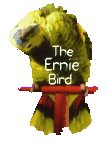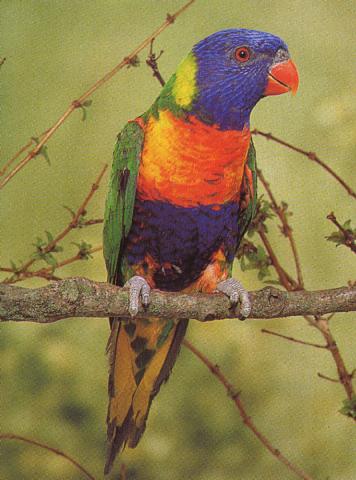
|
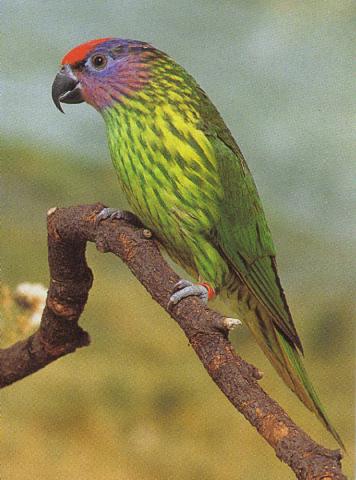
|
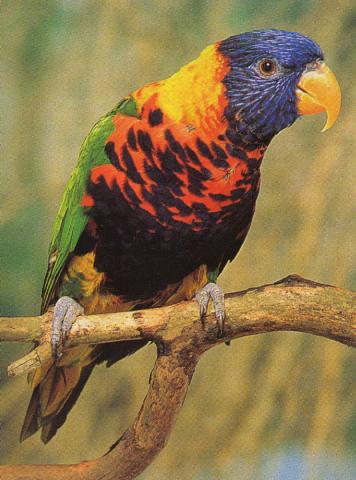
|
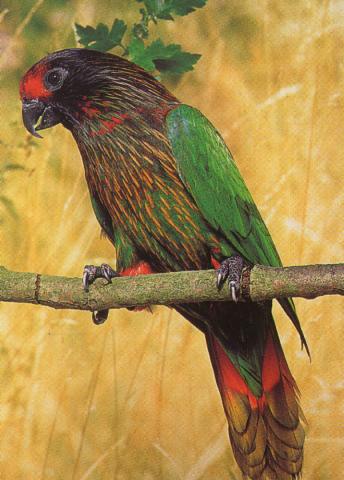 Yellow |
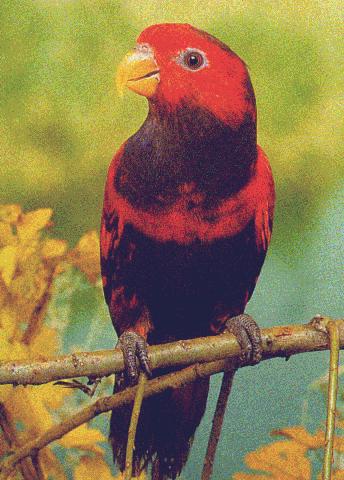 Violet |
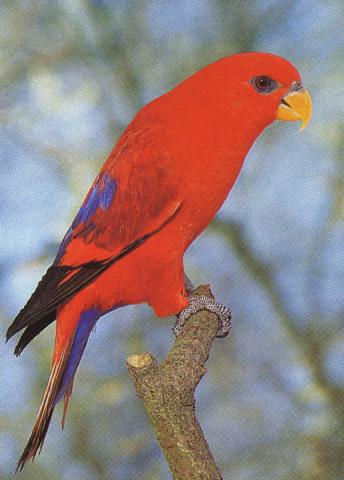 Moluccan |
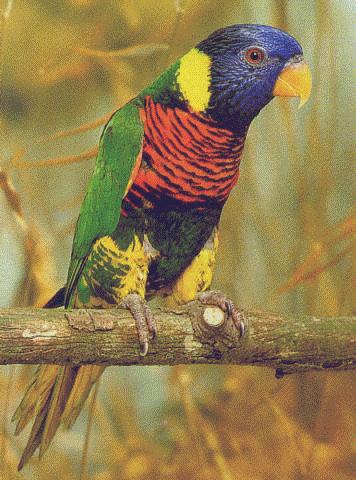 Green |

|
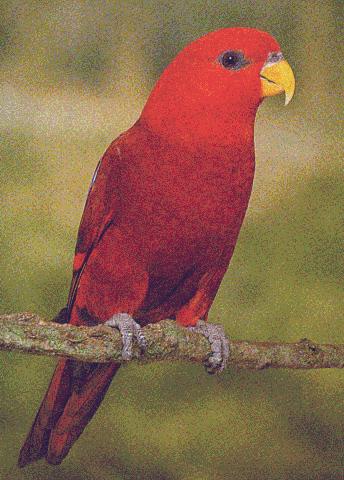
|
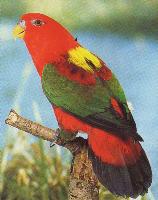
|
This colorful group of parrots is probably the most misunderstood in the avian world. Many people still to refer to them as softbills. Nope, they are parrots, in the Family Psittacidae, subfamily Loriinae. There are fifty-six species of lories, with numerous distinct sub-species. Also referred to as the "brush tongued" parrots, these dazzling clowns of the bird world frequent the flowering trees and shrubs of the tropical South Pacific. Generally found in flocks, they range throughout the islands of Indonesia, French Polynesia, New Guinea, and Australia.
The elongated papillae, or brushes on the tongue of lories is an adaptation for the collecting of pollen from flowers. Some species have amazingly long tongues (they can
lick above their eyes!) which they use to probe deep into a flower. The pollen sticks to the "brush" and is drawn back into mouth. They also feed on nectar when it is available, along with the flowers themselves, fruit, unripe seeds, and a few insects.
The insects are probably incidental to the collecting of the pollen and nectar. Either pollen or nectar can be the principle food, the pollen supplies the nitrogen while the nectar is a major source of carbohydrates. In field observations conducted in Australia it was noted that both the Purple-crowned Lorikeet Glossopsitta porphyrocephala and the Swainson's Lory Trichoglossus heamatodus moluccanus could harvest all of the pollen and/or nectar that they required to meet their daily nutritional needs in 2 or 3 hours. Thus they would have ample time to locate suitable flowering trees.
Lory or lorikeet? The difference between the two is approximately the same as the difference between a parrot and a parakeet. Lory generally refers to a bird with a short tail, while lorikeets have a long tail. The words are synonymous. As I recall when visiting Australia several years ago, all were called lorikeets regardless of size or shape of the tail.
Re: size, lories range from the tiny Wilhelmina's Lorikeet Charmosyna wilhelminae 5" (13cm) to the small amazon sized Yellow-streaked Lory Chalcopsitta sintillata sintillata
and the Duivenbode's Lory C. duivenbodei duivenbodei at 12" (30cm). The award for the largest lory overall would have to go to the beautiful Stella's Lorikeet Charmosyna papou stellae 15 1/2" (39cm) but the Stella's body is a mere 7" (18cm) while the long central tail feathers make up the difference. To me, one of the most beautiful birds on earth!
Lories have extremely strong feet as well as super sharp nails. They spend more time hanging sideways and upside down from branches, than sitting up-right when feeding. They
will even hang from the side of the cage to eat rather than sit on a perch. Some species will use their foot as a "hand" when feeding, similar to the larger parrots, while others have not exhibited this behavior. One partner of a pair may hold a grape with it's foot while both feed from it.

|

|

|
 Yellow |
 Violet |
 Moluccan |
 Green |

|

|

|

|
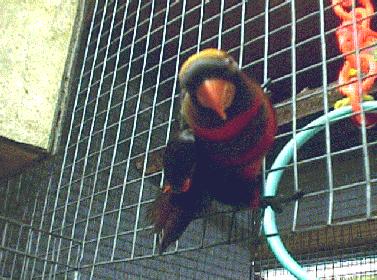
|
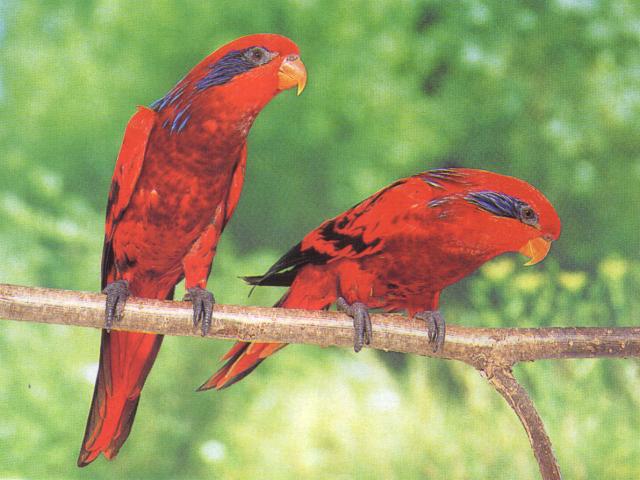 Blue |


